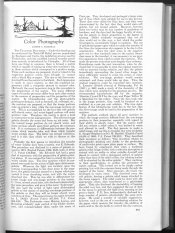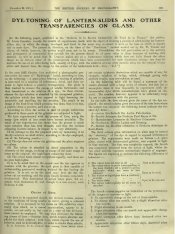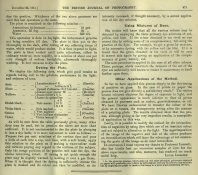Swellastic
Member
Hello there everyone. As I spend my time on this part of the APUG forums, I generally spot quite a bit of interest in the now sadly discontinued Kodachrome film product together with the ghastly difficult K-14 process. I'm sure that most people recognise Kodachrome as the slide film made by Kodak invented in the mid thirties.
However, it might be interesting to note that the years leading up to the First World War, the word "Kodachrome" was in fact used to denote another product that used a 2 colour process. Simply states, you took two different negatives through filters (red and green) which after regular processing were bleached and dyed, one in a kind of bluish green (I want to say teal?) and the other in a kind of burnt orange colour. Afterwards, when you took these two positive transparencies together in registration on a light table, it made the appearance of a full colour photograph.
Now, one important thing to note is that since this is a two colour process involving essentially red and green, it fails to accurately reproduce blue, violet, magenta, and purple. However, it would serve to be useful for colour portaiture because of its ability to reproduce flesh tints, red, orange, green, gray, and black. The photographs themselves are surprisingly sharp and the colours themselves are accurate, rich and very true to life (at least for the spectrum they reproduce). Now, I have with the help of user "holmburgers" been able to find literature that addresses this process together with patents that might help someone get started if he or she would want to investigate further. I will provide the linkThis post over at New55 has all the pertinent links and gives some idea of the method. below.
One thing that is a bit frustrating is that it does not seem that the formulas for the dues that are used for the process have ever been publicised. One must give me pardon for my lack of knowledge in photographic chemistry, but I do not know how one would go about creating such dyes from scratch. I hoped that perhaps with help from others more knowledgeable than me, some light might be shed on that particular subject.
As I see it, this process does not seem particularly difficult to do granted one has access to the required materials. It does not seem to produce any more of a challenge than, say, toning a print or something in that manner. Some people might disagree, but I find that the Capstaff process might be interesting to pursue further, as it offers interesting results for anyone that successfully manages to reproduce it accurately.
------------
Links for further literature:
http://new55project.blogspot.com/2012/03/early-color-transparencies-at-george.html
-->The given post over at the New55 website has all the relevant links and gives some idea of the method together with some relevant information in the comment section, such as links to patents produced by Mr. Capstaff.
However, it might be interesting to note that the years leading up to the First World War, the word "Kodachrome" was in fact used to denote another product that used a 2 colour process. Simply states, you took two different negatives through filters (red and green) which after regular processing were bleached and dyed, one in a kind of bluish green (I want to say teal?) and the other in a kind of burnt orange colour. Afterwards, when you took these two positive transparencies together in registration on a light table, it made the appearance of a full colour photograph.
Now, one important thing to note is that since this is a two colour process involving essentially red and green, it fails to accurately reproduce blue, violet, magenta, and purple. However, it would serve to be useful for colour portaiture because of its ability to reproduce flesh tints, red, orange, green, gray, and black. The photographs themselves are surprisingly sharp and the colours themselves are accurate, rich and very true to life (at least for the spectrum they reproduce). Now, I have with the help of user "holmburgers" been able to find literature that addresses this process together with patents that might help someone get started if he or she would want to investigate further. I will provide the linkThis post over at New55 has all the pertinent links and gives some idea of the method. below.
One thing that is a bit frustrating is that it does not seem that the formulas for the dues that are used for the process have ever been publicised. One must give me pardon for my lack of knowledge in photographic chemistry, but I do not know how one would go about creating such dyes from scratch. I hoped that perhaps with help from others more knowledgeable than me, some light might be shed on that particular subject.
As I see it, this process does not seem particularly difficult to do granted one has access to the required materials. It does not seem to produce any more of a challenge than, say, toning a print or something in that manner. Some people might disagree, but I find that the Capstaff process might be interesting to pursue further, as it offers interesting results for anyone that successfully manages to reproduce it accurately.
------------
Links for further literature:
http://new55project.blogspot.com/2012/03/early-color-transparencies-at-george.html
-->The given post over at the New55 website has all the relevant links and gives some idea of the method together with some relevant information in the comment section, such as links to patents produced by Mr. Capstaff.













 (at least in terms of making the glop). Is it necessary to follow some particular formulas, or can only simply make glop as one would for carbon printing? I guess if the latter is the case, then one would simply need to figure out how much extinction dye is neccesary to add in order to get a proper matrix.
(at least in terms of making the glop). Is it necessary to follow some particular formulas, or can only simply make glop as one would for carbon printing? I guess if the latter is the case, then one would simply need to figure out how much extinction dye is neccesary to add in order to get a proper matrix.


